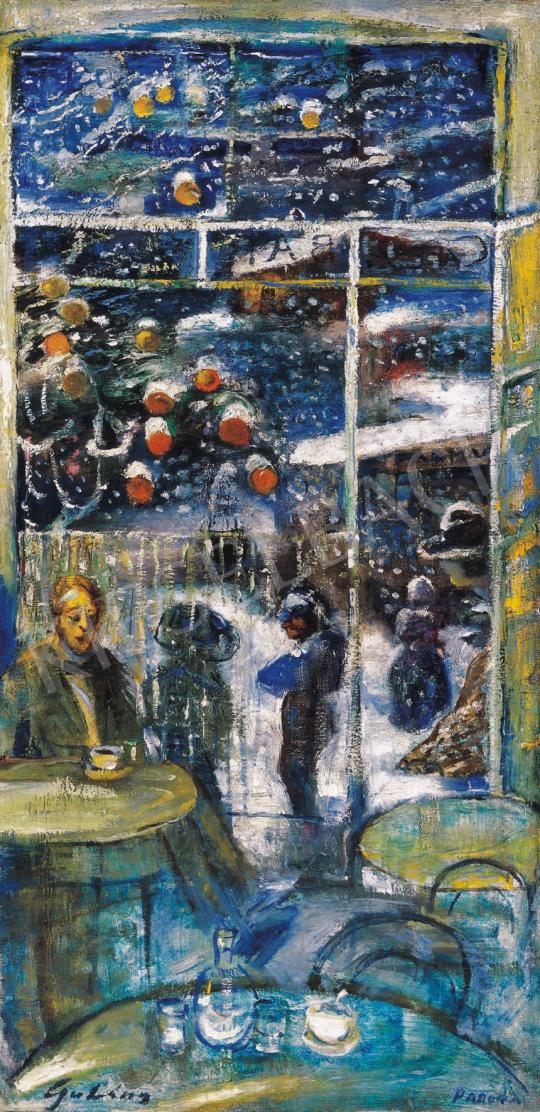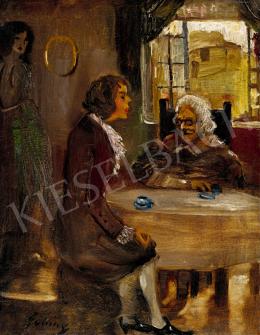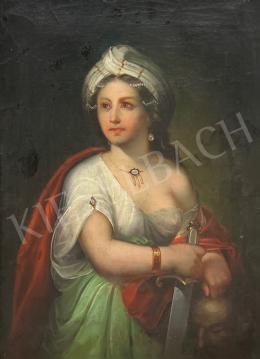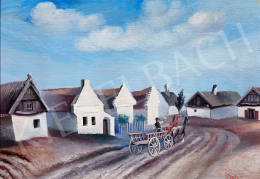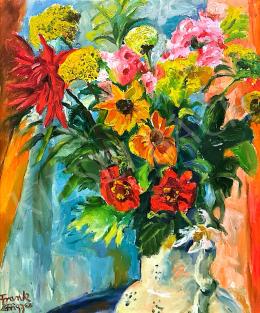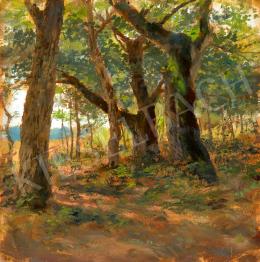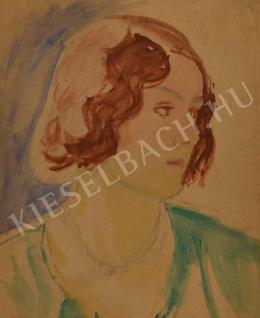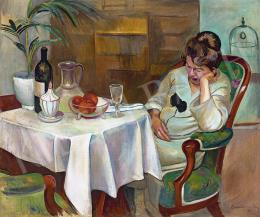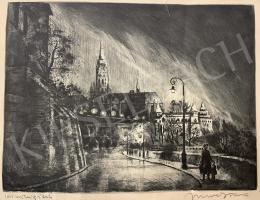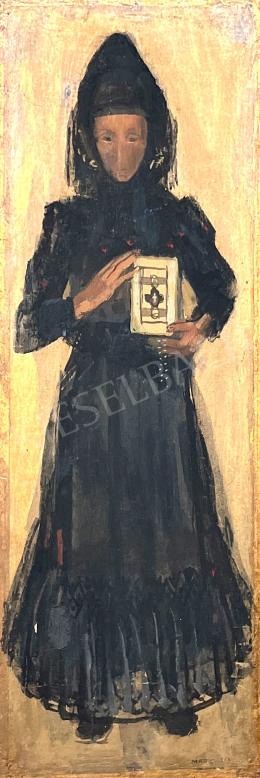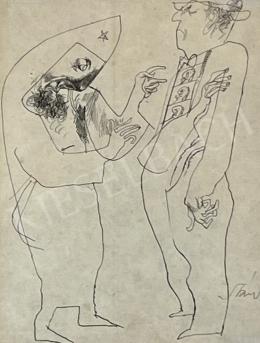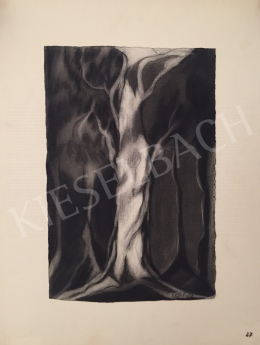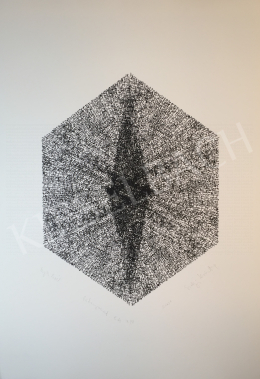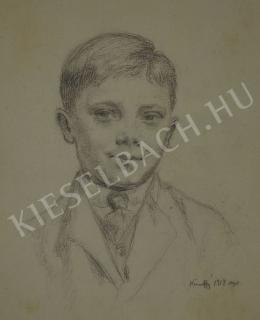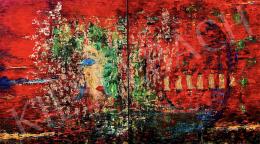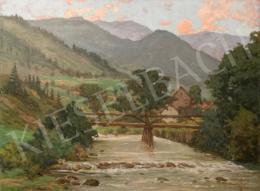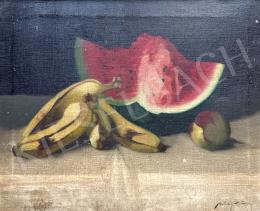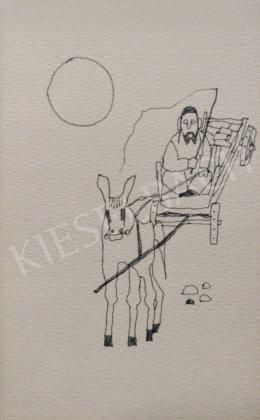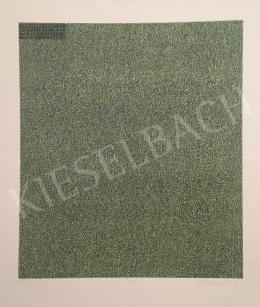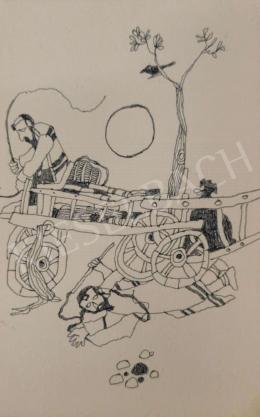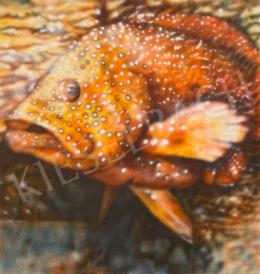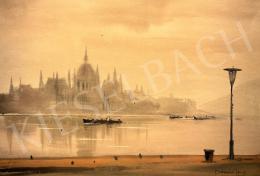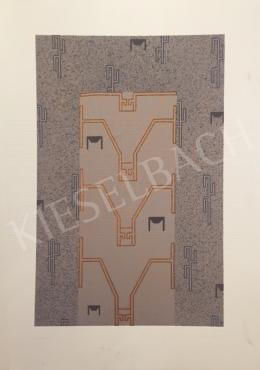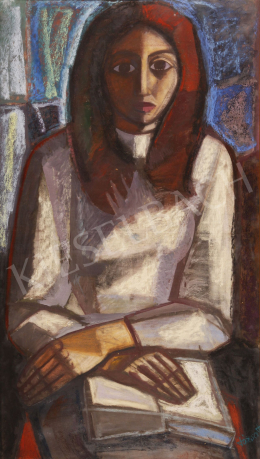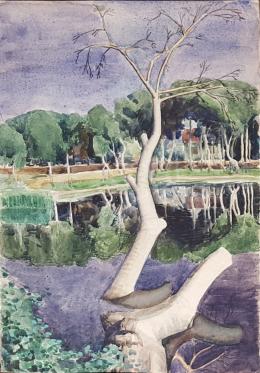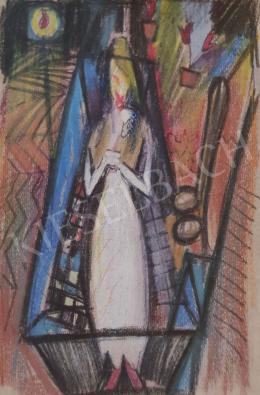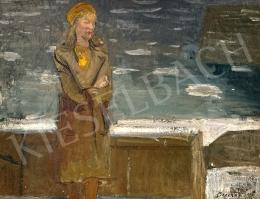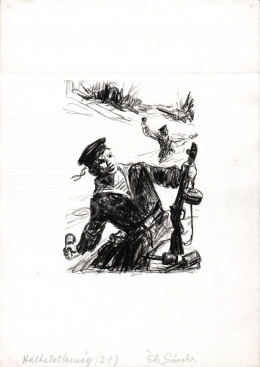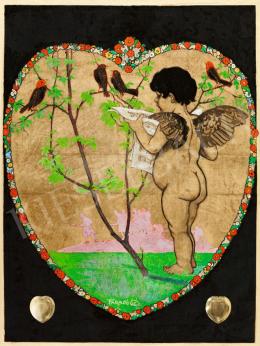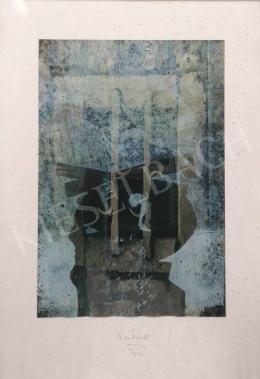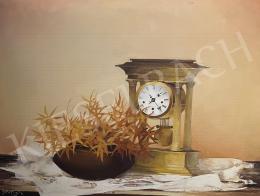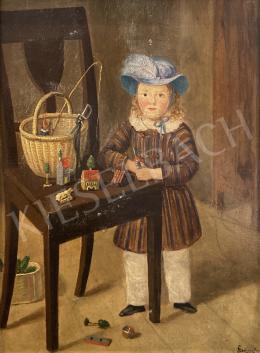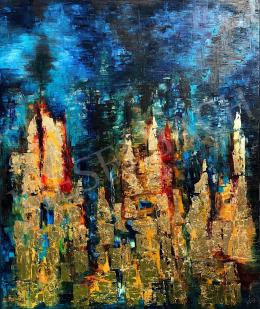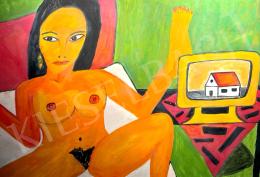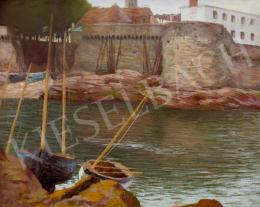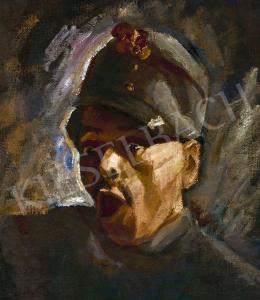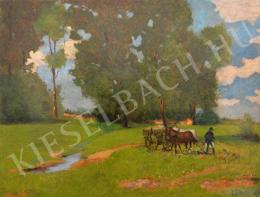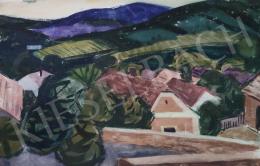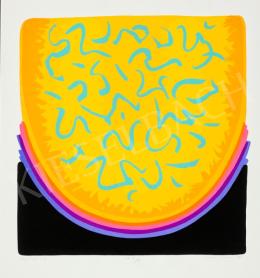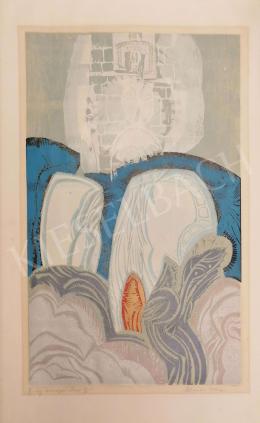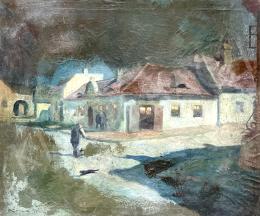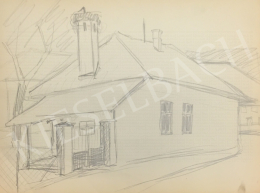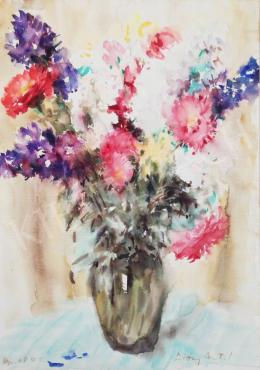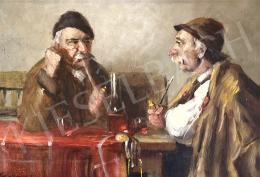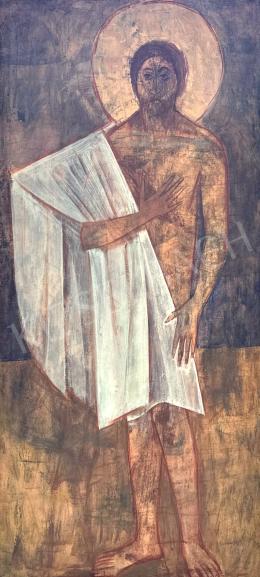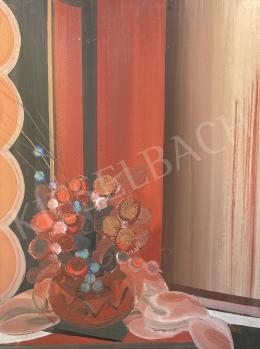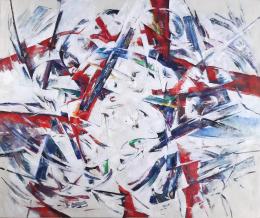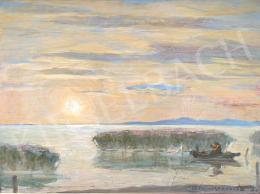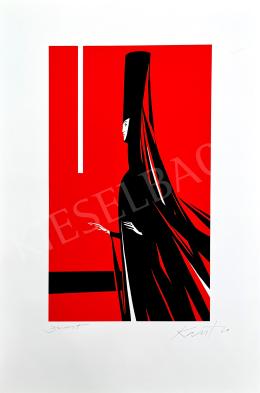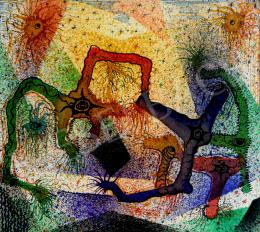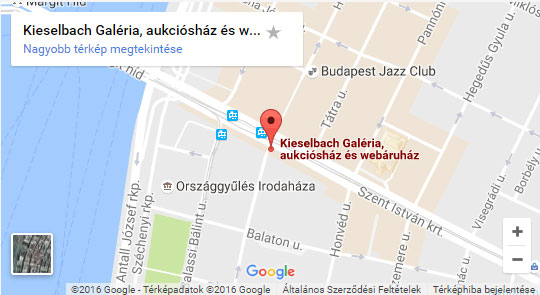On the stretcher there are exhibition labels and the painter's notice: " Gulácsy L. Rigo utca 14. "Egynapos ho" olajf. 300 kor."
Provenance:
It used to be a piece of Imre Oltványi-Ártinger's collection.
Exhibited:
Fiatalok kiállítása.(Exhibition of the Youth.) Nemzeti Szalon (National Salon), April, 1916.
Tamás Gallery, Exhibition XLIX. January, 1933.
Uj Romantika.( New Romanticism.) Tamás Gallery, February-March, 1944.
Gulácsy Lajos és Lieb Ervin hagyatéki kiállítása.(The Exhibition of Lajos Gulácsy and Ervin Lieb's Legacy.) Nemzeti Szalon (National Gallery), October, 1936.
Gulácsy Lajos Emlékkiállítás. ( Gulácsy Retrospective Exhibition.) Székesfehérvár, István Király Múzeum, 1966.
Twentieth Century Hungarian Art. The Arts Council of Great Britain at the Royal Institute Galleries, London, May, 1967.
Reproduced:
Magyar Művészet, 1933. p. 68.
Szabadi, Judit: Gulácsy Lajos. Budapest, 1969. Pic.11.
Hungarian Review, August, 1970. p.14.
Tükör, 30, January,1977. p.24.
Szabadi, Judit: Gulácsy Lajos. Budapest, 1983.
Gulácsy, Lajos: A virágünnep vége. Budapest, 1989. (pict.IX.)
Literature:
Szabadi, Judit: Gulácsy Lajos. Budapest, 1983.
Gulácsy, Lajos: A virágünnep vége. Budapest, 1989. (pict.IX.)
Szíj, Béla: Gulácsy Lajos. Budapest, 1983.
The exceptionality of Gulácsy's art first was recognised by the then contemporary representatives of Hungarian literature. Among others, Kosztolányi and Gyula Juhász, Artúr Keleti and Sándor Weöres drew inspiration from the lyrical, bizarre world of Gulácsy's pictures. The writers were rambling in the poetic world and among the strange figures of the pictures with more enthusiasm than the critics; their wanders were transformed into poems and stories several times. Gulácsy's works were not born from a clear picturesque experience; they came from the depth of his conscious. The inner experience did not only take the form of a picture but also that of a short story. The picture presented here is an excellent example to show how writing and painting, text and visuality dovetails in Gulácsy's oeuvre. As Kosztolányi wrote about the artist, 'The poet took the brush out of the painter's hand. And, more often, the poet handed it over to the painter, so that he could paint.'
It is not a good way to approach Gulácsy's pictures through the objects of the represented world or by the mechanical unstitch of the symbols. His art, which got inspiration from inner visions can only be revealed with the help of his individual point of view. His world is not represented by symbols borrowed from the history of culture ; the macrocosms is blossoming out in his intimate, individual existence by a multiple refraction of light. Examining the picture presented here Gulácsy's characteristic, autonomous universe is exposed. The scenes, the characters, the transient, vague forms, the quality of the forming of the surface are all individual initials which are very essential from the point of view of the interpretation. However, the picture is vivid and captivating even if one does not know anything about the novelistic elements of the picture and about the history of Gulácsy's world of conscious. It is informing the viewers about the depth where there is the root of every human. This projection of dreams, unconscious visions, hallucinations and imaginings are familiar to everybody; they are the common treasure of the collective unconscious.
Cafés played an important role in Gulácsy's life. It was a place where he could draw inspiration; the café as scene appeared several times in his pictures. The friends' literary portraits of him were usually sketched in this scenery as well. The artist's daydreaming spirit found this place, which was out of time and space, instinctively. The European carrier of the café became inseparable from the history of European art of the era. From the 18th century the institution of the café could not be separable from the myth of citizenry. While wine became the symbol of a peaceful life in the countryside, coffee represented the ceaselessness and bustle of the city. The visitors of a café did not hide from the world; they were sitting in huge shop-windows, they were contemplating the world from perfectly visible interiors. On the other hand, there was another aspect which was perhaps more important for Gulácsy; namely, that in a café the guests could take off their social status and could enter into a place where the hated rules of the outer world were not valid. This feeling appears in several poems of the period, where the café is represented as a ship which has its own rules and laws and where the passengers can forget about the burden of their lives and the passing of time.
The particular format of the picture, the unsubstantial bodies, the snowdrops and the pattern of the curtain all suggest the feeling of streaming and floating; this is a projection of an easily flying dream. By the chosen point of view, the painter is able to 'pull' the viewer into the intimate space of the picture. The oval onyx tables, the water-bottle with the glasses, the bentwood chairs which became the symbol of the era and the elegant guest wearing a bow tie, contemplating in his silent loneliness are all well-known characters of this inner, timeless world. Over the glass walls a fantastic, attractive world of wonders turns up. The first snow is always a beautiful experience; it evokes the light-hearted world of childhood. This is a magic that transubstantiates everything: the noise is softened, the tired grayness is away. In Gulácsy's picture the oranges are dangling like Christmas decorations; the sovereign vision creates a new order instead of the well-known rhythm of the seasons. The transgression of the laws of the real world is a returning element in Gulácsy's art. As he wrote: 'Sacred is the lie which is without an interest.'
His choice of topic, which is independent of the world of experiences in several elements, is accompanied by a characteristic forming. The mistakes made in the drawing and the autonomous distortion are applied consciously; they lift out the representation from the real and material, and put it into the dimension of dreams and free illusions. The painter refused the mechanic recreation of touchable forms, puts floating, whirling stains of colors onto the canvas and loosens the surface by small lines and dots. He writes somewhere that some parts of the picture are not elaborated or seem to be distorted, but this is the most valuable feature of a painting. He cites Giotto and Giorgione, who also applied this 'negligence' in their works.
Not like other pictures by Gulácsy, the painting presented here survived the last hundred years in a very good condition. The surfaces of the picture perfectly illustrates the painter's special method of creation. The floating, distorted forms were shaped not only by the brush but also by his fingers and the stem of the brush.
It is inevitable that the painting presented here is a masterpiece; perhaps the most lovable and capturing work of the oeuvre. The fact that it is a piece from one of the greatest Hungarian collectors' collection makes the painting even more valuable. The picture has remained the family's property until the present day; for the first time after seven decades, the audience has got the possibility to buy it at the present auction of the Kieselbach Gallery.
Molnos, Péter






